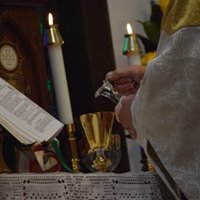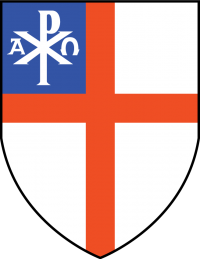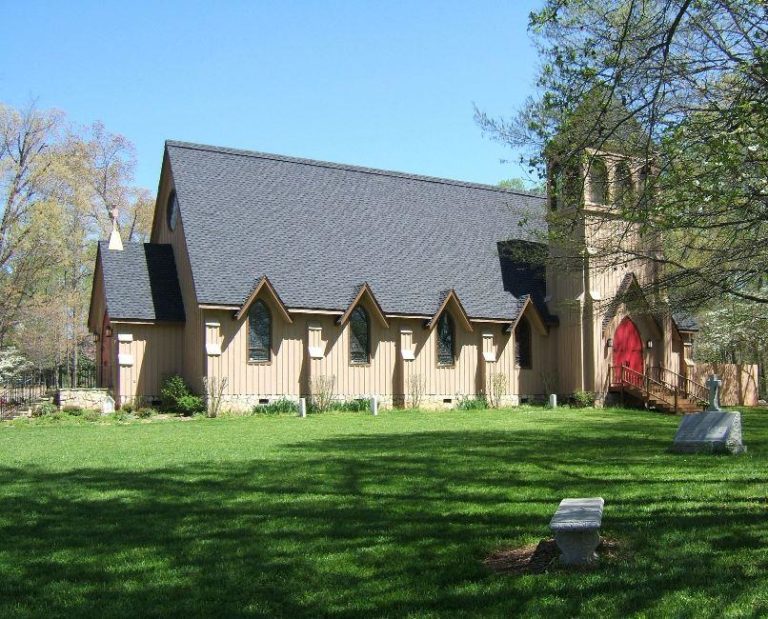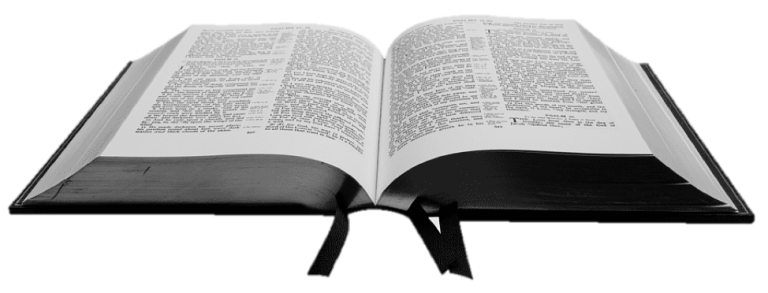1928 Prayer Book Eucharistic Rite part II
 Nicene-Constantinopolitan Creed follows the reading of the Gospel. After hearing the readings from the Scriptures the people of God confess their faith. “Our earliest record of the creed said during the liturgy tells that it was introduced by the Patriarchs Peter the Dyer at Antioch (470-488) and Timothy I of Constantinople (511-518)… In the west the creed first appeared in Spain as a protest against the Arians. It was said after the consecration, before the Our Father, where it remains in the Mozarabic rite. Rome, ever as conservative in liturgical matters as radical in matters of polity, received it cautiously. Leo III (795-816) permitted it to be used in Gaul where it had been imported from the east; but he forbad the addition of the filioque… In 1014 when Henry II was crowned in Rome he noted the absence of the creed and persuaded the pope, Benedict VIII, to impose it upon his church. Now the creed is found in all rites, in the liturgy of the faithful, but at varying places.”26
Nicene-Constantinopolitan Creed follows the reading of the Gospel. After hearing the readings from the Scriptures the people of God confess their faith. “Our earliest record of the creed said during the liturgy tells that it was introduced by the Patriarchs Peter the Dyer at Antioch (470-488) and Timothy I of Constantinople (511-518)… In the west the creed first appeared in Spain as a protest against the Arians. It was said after the consecration, before the Our Father, where it remains in the Mozarabic rite. Rome, ever as conservative in liturgical matters as radical in matters of polity, received it cautiously. Leo III (795-816) permitted it to be used in Gaul where it had been imported from the east; but he forbad the addition of the filioque… In 1014 when Henry II was crowned in Rome he noted the absence of the creed and persuaded the pope, Benedict VIII, to impose it upon his church. Now the creed is found in all rites, in the liturgy of the faithful, but at varying places.”26
After the Creed, the 1928 Book of Common Prayer has a rubric that says, “Then followeth the Sermon.” The Liturgy of the Book of Common Prayer restores the ancient balance of Law and Gospel, and of Word and Sacrament. The sermon was restored as an important part of the Christian Synaxis.
The Offertory follows the sermon. In the primitive Roman Rite the Bread and Wine were offered together with one short prayer called the Secret. The practice of offering the bread and wine separately and the use of the Offertory Prayers found in the Tridentine Roman Rite are all much later. The Offertory of the 1928 Book of Common Prayer restores ancient Western liturgical practice.
Next follows the restoration of the Prayers of the Faithful or Intercessions, called in the Prayer Book, “The Prayer for the Whole [healthy] State of Christ’s Church.” The Prayers of the Faithful had been found early in the Liturgy of the Faithful in the primitive Roman Rite, but had later been moved to the Canon, leaving only the Oremus, but no Intercessions. In the Mozarabic Rite the Intercessions are also separate from the Canon and placed near the Offertory. The Liturgy of the 1928 Book of Common Prayer restores the Intercessions to their ancient place in the Western Liturgy.
After the Prayer for the Whole State of Christ Church comes the Exhortation (used thrice each year), the Invitation, General Confession, Absolution and Comfortable Words. These devotions in preparation for receiving the sacrament of Holy Communion are an English version of the French and German vernacular preparation called Prone that had long been inserted in the Latin Mass on Sundays and holy days. References to Prone can be found in documents of the ninth century, long before the Great Schism.
With the General Confession and Absolution, the faithful are now prepared for the Consecration of the elements and the reception of the sacrament Holy Communion. The Prayer of Consecration (Anaphora or Canon) is introduced by the Sursum Corda. The 1928 Book of Common Prayer has Proper Prefaces for ten holy days: Christmas, Epiphany, Purification, Annunciation, Transfiguration, Easter, Ascension, Whitsunday (Pentecost), Trinity Sunday and All Saints Day. The Gregorian Sacramentary (c. seventh century) also had ten.
The Sanctus varies in wording, but is found in all living liturgies. The Liber Pontificalis ascribes its use in the liturgy to Pope Sixtus I (AD 119-128). The Bendictus is a hymn found in the 1940 Hymnal, an authorized liturgical book of the Church, and is commonly used in both High and Low Masses immediately following the Sanctus.
Following the Sanctus and Benedictus, the Prayer of Consecration continues: “All glory be to thee, Almighty God, our heavenly Father, for that thou of thy tender mercy, didst give thine only Son…” (1928 BCP, p. 80). The Eucharistic Liturgy is offered to the Father through the Son, and the gifts are offered as an Oblation to the Father: “we, thy humble servants, do celebrate and make here before thy Divine Majesty, with these thy holy gifts, which we now offer unto thee…” (1928 BCP, p. 80).
“The first paragraph [of the Prayer of Consecration] takes up the theme of ‘glory’ from the Sanctus, in thanksgiving for the supreme gift of God’s mercy in the perfect and all sufficient sacrifice of His Son upon the Cross for the redemption of the whole world from sin… These words do not commit our Church to any one of the various theories about the Atonement wrought by Christ, but simply safeguard the doctrine that He alone is the ‘Propitiation for our sins’ (I John ii. 1-2). The Eucharist is the perpetual memorial in the Church of that redemption made once for all, and the continual presentation and pleading by the Church before God of its ‘full, perfect, and sufficient’ accomplishment… Cranmer had both the Eastern and Western forms [of Prayers of Consecration] before him. He followed the order of the Latin Canon and the phrasing of the Greek prayers… Moreover the Non-Jurors removed the Invocation to its present (Eastern) position, immediately following the Oblation.”27
Early editions of the Book of Common Prayer accepted the then generally held Western view that the Consecration was effected by the Words of Institution, and there is patristic support for this view. In De Sacramentis, St. Ambrose of Milan (d. 397) discussed the Consecration which he attributed to the Words of Institution: “Thus the word of Christ consecrates this sacrament.” And St. Augustine of Hippo taught, “Accedat verbum ad elementum, et fit sacramentum” – “If the word be joined to the element, it becomes a sacrament.”
However, as the Anglican Reformation (really Restoration) continued, the Church embraced the practice of the Eastern Churches. The 1928 Book of Common Prayer follows the Scottish Order with the Invocation (Epiclesis) after the Words of Institution and the Oblation. The English Proposed book of 1928 and the Scottish 1929 Book of Common Prayer have also followed this Eastern liturgical practice. Apostolic Tradition by St. Hippolytus demonstrates that the use of an Epiclesis after the Words of Institution was the ancient Roman practice as well. Scholars are unsure when or why the use of an Epiclesis was discontinued in the Roman Canon. It has been said that Tradition is the life of the Holy Spirit in the Church, and the Holy Spirit has been constantly leading the Anglican Church (in the days of its orthodoxy) in the direction of patristic Christianity.
Where the 1928 Book of Common Prayer is somewhat unique is in its use of “Word and Holy Spirit” rather than just “Holy Spirit” in the Invocation (Epiclesis). However, once again this was no unhistorical innovation. The Invocation of the Word, Christ Himself, was sometimes used in the primitive Church in the Eucharistic Liturgy. For instance, Bishop Serapion of Thumis in Egypt (c. 339-363), an important mid-fourth century source, prays in his Liturgy that the Word come upon the elements that they become the Body and Blood of Christ: “O God of truth, let your holy Word come upon this bread, that the bread may become the body of the Word, and upon this cup, that the cup may become the blood of Truth.” “Again, after its first edition, the American Prayer Book capitalized ‘Word’ as well as ‘Holy Spirit,’ to prevent any misunderstanding that the ‘Word’ referred to is the Words of Institution rather than Christ the Word Himself.”28
The Words of Institution in the 1928 Book of Common Prayer follows the Eastern pattern rather than the Western. “The Gallican and Roman [Rites] introduce the words of institution with the phrase ‘Who, the day before he suffered’ instead of the eastern (and Mozarabic) formula ‘Who, the night in which he was betrayed…'”29 The 1928 Book of Common Prayer has, “For in the night in which he was betrayed.”





